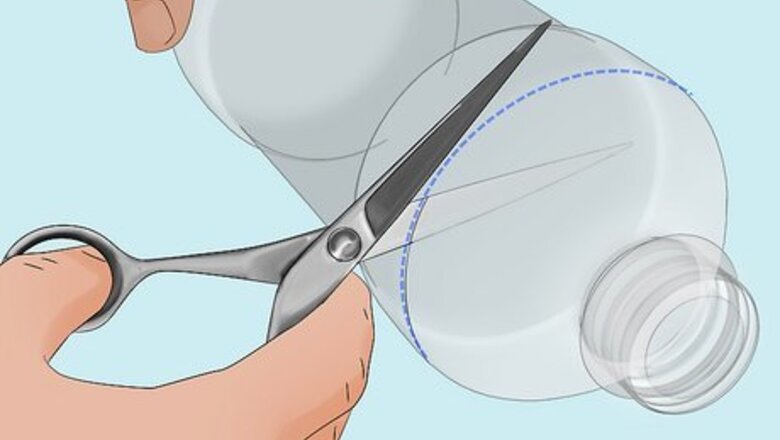
views
- Cut the top off a plastic bottle, insert it upside-down into the bottom of the bottle, and staple it in place. Then add sugary water and bait to attract flies to the trap.
- Make a jar trap by adding sugary water and bait to a jar. Cover the jar with plastic wrap and poke holes for flies to enter and become trapped.
- Make flypaper by cutting a brown paper bag into strips and soaking them in sugary water. Hang the strips with string to attract the flies, letting them get stuck.
- Houseflies are attracted to rotting meat, while fruitflies are most attracted to fruit. Use one or both to attract whichever kind of flies are in your home.
Bottle Fly Trap
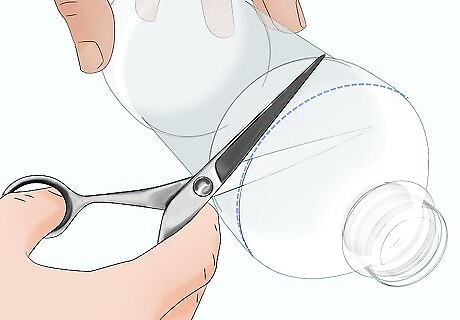
Cut the top off a plastic bottle to make a funnel. Wash and dry the bottle before cutting it. Make sure there is no drink residue left, since it could interfere with the trap. Use scissors to poke a hole roughly 2 inches (5 cm) from the top of the bottle, at the point where the curved “funnel” part becomes straight. Insert your scissors and cut off the top of the bottle in a circular pattern. Make your cut as close as possible to the spot where the top “funnel” part of the bottle meets the tube-shaped cylinder. If you cut too close to the top of the bottle, the next step won’t work correctly. The cut-off top of the bottle will be funnel-shaped. The rest of the bottle will be shaped like a tube. You can also use a serrated knife to cut off the top of the bottle.

Flip over the cut-off funnel and stick it into the bottom half of the bottle. The sides of the funnel should line up with the rest of the bottle, leaving no space. Push it in slightly so that it does not pop out.
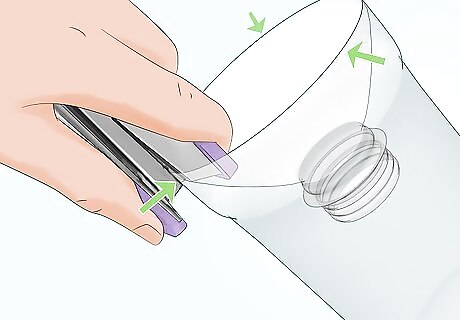
Staple the funnel to the bottle to hold it in place. Use 3-4 staples around the circumference of the bottle. Space the staples equally so that there are no large gaps between the funnel and the bottle. If you don’t have a stapler, secure the funnel to the bottle with tape. Apply several pieces of tape around the circumference of the bottle so that the funnel doesn’t move.
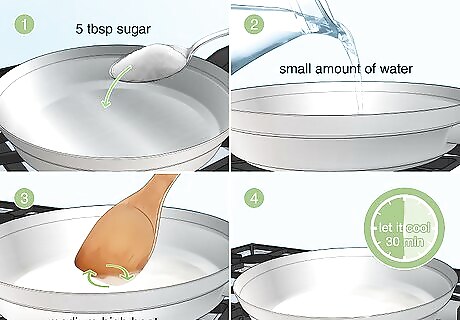
Mix sugar and water to create a syrup. Add 5 tbsp. (63 g) of sugar to a small pot, spreading the sugar evenly across the bottom of the pot. Add a small amount of water—just enough to cover the sugar. Then stir the mixture continuously over medium-high heat until it begins to boil. Once it begins boiling, turn off the heat and let it cool for about 30 minutes, until it’s close to room temperature. Make sure the mixture is boiling before cutting the heat. The boiling turns the sugar water into syrup, which will attract flies more effectively.

Use a spoon to add the cooled-down syrup to your bottle trap. Let the syrup drip down the inside of the funnel and down into the bottom of the trap. This will attract the flies to the funnel and draw them to the bottom, where they’ll get stuck.

Add extra bait like fruit, raw meat, or both. This will make the trap even more attractive to the flies. To attract fruit flies, use chunks of fruit like apples, pears, bananas, or whatever you have in your home. To attract houseflies, use raw chicken, fish, or some other smelly raw meat you have in your fridge. Don’t add raw meat if you plan to use the trap inside your home. It will smell terrible. Stick with fruit alone. Instead of meat, you can use a few spoonfuls of old red wine. This will add “meaty” smell without having decomposing meat in your trap. You can also add extra sugar water or honey to your trap.

Add a spoonful of white vinegar to ward off other bugs. Vinegar will discourage bees and other unwanted insects from investigating your trap. The flies won’t mind the vinegar, though.
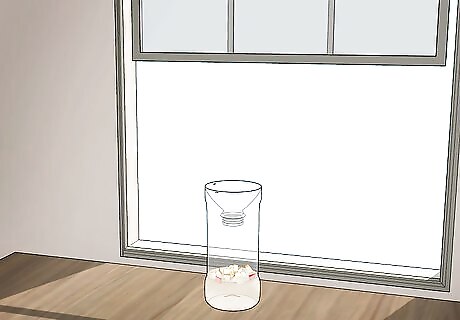
Leave your bottle trap in a sunny spot for a few days. This help the fruit or meat decompose, which draws flies to the trap. It will also cause liquid mixtures to evaporate, creating a pheromone that attracts even more flies.
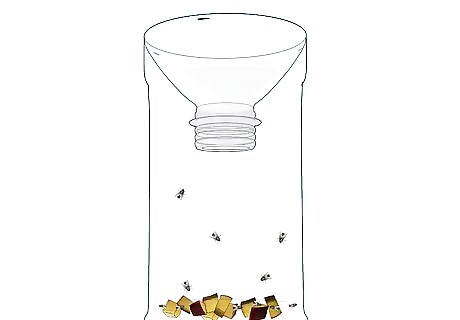
Let trapped flies accumulate in the bottle. The more flies you catch, the more will be attracted to the trap. Some of the flies may drown in the liquid, but this is a more sanitary outcome than letting them fly around your house or property. Once you’re satisfied with the number of flies you’ve caught, wash the bottle out and make a new trap. You can also throw the trap away if you don’t need it anymore. Wear gloves when handling the trap to avoid touching dead flies.
Jar Fly Trap
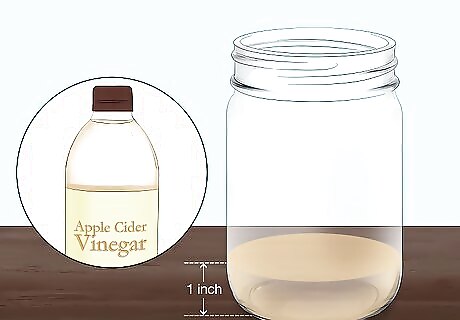
Add a 1-inch (2.5 cm) layer of apple cider vinegar to a jar. The apple cider vinegar will attract flies. Then add a few drops of dish soap and mix them into the vinegar. This breaks the surface tension, preventing flies from walking on the vinegar. Use a glass or plastic jar. Be sure to wash and dry it before adding the apple cider vinegar.

Add chopped fruit for fruit flies, or raw meat for houseflies. The fruit or raw meat will act as bait, attracting flies to the jar. Chop up your bait into small pieces and place them at the bottom of the jar. To attract fruit flies, try using bananas as bait. For house flies, you can use any rotting meat.
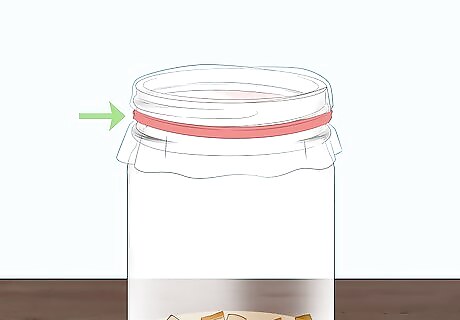
Cover the opening of the jar with plastic wrap. Press the wrap tightly around the rim of the container with your hands. Then use a rubber band or tape to secure the wrap in place.
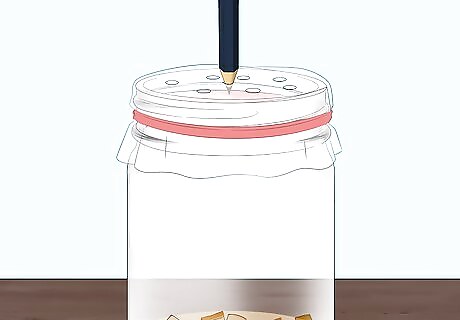
Poke holes in the plastic wrap. Use a fork, pencil, or toothpick. Make sure the holes are large enough for flies to crawl through. These will let them gain entry into the trap. For fruit flies, poke holes with a toothpick. Fruit flies are tiny enough to fit through small holes. For houseflies, poke larger holes with a pencil or pen.

Place the trap in a warm, sunny spot. The flies will enter the trap through the holes. They’ll become trapped since it’ll be difficult for them to find the holes they used to enter.

Let trapped flies accumulate in the jar. The more flies you catch, the more will be attracted to the trap. Some of the flies may die in the trap. Leave the jar for a few days to let as many flies get trapped as possible.

Kill the flies by drowning them in hot water. Once you’re happy with the number of flies in the trap, bring the trap inside and place it near the sink. Fill your sink with hot water, using the stopper to let your sink fill up. When the sink is full, place the trap in the sink for ten minutes. This will drown the flies.

Throw away the dead flies. Remove the plastic wrap and throw it away. Bang the container against the inside of a trash can until all the dead flies fall out. Wash the jar with soap and hot water and let it dry. Use the clean jar to create another trap if needed.
Making Your Own Sticky Flypaper
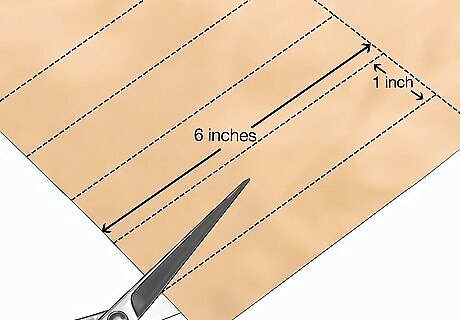
Cut a brown paper bag into strips 1x6 inches (2.5x15 cm) in size. Make 4-5 strips in total. You can use any paper grocery or shopping bag. If you don’t have brown paper bags, use yellow construction paper. The color yellow attracts many insects, including flies. Don’t use plastic bags since the sticky mixture in the next step won't stick to the plastic.

Poke a small hole 1 in (2.5 cm) from the end of each strip. Use scissors or a knife to make the holes. You can also use a hole puncher if you have one available.
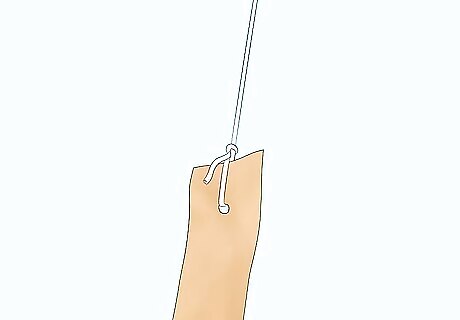
Cut a 6 in (15 cm) piece of string for each strip of paper. Feed a piece of string through each hole. Then tie a string to the hole using a small knot, leaving the majority of the string available on the other end.
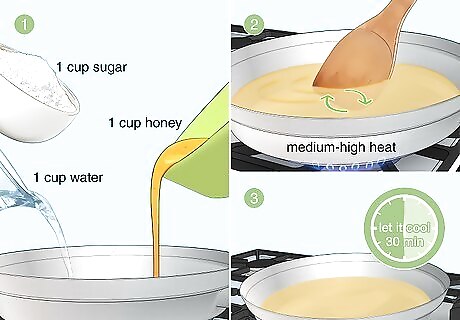
Combine sugar, honey, and water to make the paper’s sticky coating. Add 1 cup (240 mL) of sugar, one cup 1 cup (240 mL) of honey, and 1 cup (240 mL) of water into a saucepan. Stir the ingredients over a stove on medium-high heat until they’re well mixed. Once they are mixed, let the mixture cool for 30 minutes, or until it drops to room temperature.
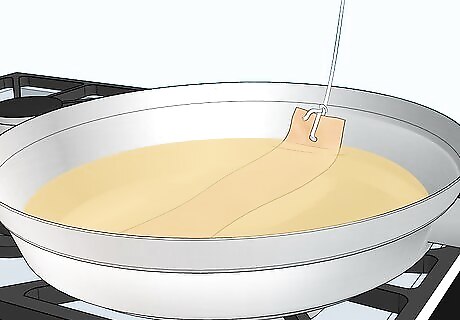
Dip each paper strip into the mixture and leave it out to dry. Fully soak each strip in the mixture, but hold the string in your hand to keep it dry. Then place each strip on a baking sheet for 1 hour to let it dry.
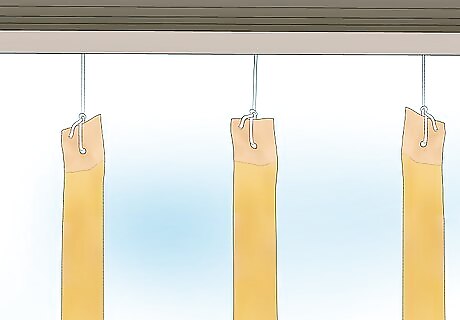
Hang the strips up wherever you frequently see flies. Use nails or tacks to hang the strips. Hang the strips near each other to make a more effective trap. The strips should be no more than 6 feet (1.8 m) off the ground, since most flies stay near ground level. If you prefer, you can also hang the traps around your house to see which spots catch more flies. Once you find a good spot, move the rest of the traps to that area.
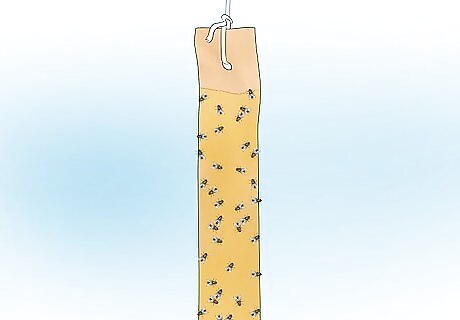
Let flies accumulate on the sticky paper. The more flies you catch, the more will be attracted to the trap. The flies will slowly die on the paper since they’re unable to move or eat. Leave the traps hanging for a few days to catch as many flies as possible. Once they are coated in flies, take them down and throw them away. If the traps don’t work, they probably don’t have enough sticky mixture on them. Make a new batch of the mixture and dip the papers in again. Once they’re dry, hang them up again for a few days.














Comments
0 comment